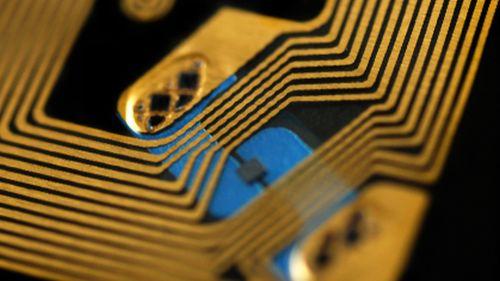RFID’s Evolution – From Addressing Post-Pandemic Supply Chain Issues to Where it's Heading in The Future
We’ve seen new technologies sweep the nation over the last few years. From businesses going fully remote during the pandemic to the implementation of artificial intelligence across a variety of industries, it’s safe to say technology will continue to have a massive impact for years to come. Obvious industries that have begun relying heavily on technology include healthcare, academia, and sales. But one that might not be so obvious is retail.
The retail industry took a massive hit during the COVID-19 pandemic. Online shopping managed to keep some brands afloat, but those that relied heavily on their physical stores found themselves struggling to stay in business. But the struggles that came with maintaining brick-and-mortar stores weren’t just rooted in the fact that people weren’t leaving their houses as much; it was also an issue of inventory. With consumers shopping less, business owners had to get more strategic about their inventory. However, this was nearly impossible given the massive lack of data and visibility into what their customers were and weren’t buying. Fortunately, this is when technology stepped in and started providing solutions to many of the issues the retail industry had been facing.
Fast forward to present day and technology has really taken the retail industry by storm. In January, NRF 2023: Retail’s Big Show Innovation Lab introduced the latest applications in technology that can help retailers manage inventory challenges and ultimately transform the industry. While dozens of new technologies were presented, the standout this year was the radio-frequency identification (RFID), which uses electromagnetic fields to automatically identify and track tags attached to objects.
Thanks to its ability to offer solutions to challenges created by the pandemic, such as component shortages and supply chain issues, RFID has helped supply chain organizations keep better track of inventory. This has offered an incredible solution for supply chain organizations, but it still has its limitations when it comes to retail. For example, RFID has a manual element for inventory management, meaning it isn’t 100% automated. This feature results in the requirement of costly overhead readers that many apparel companies are not installing, making it difficult for brick-and-mortar to fully benefit from RFID alone.
In order to ensure RFID can address more than just supply chain challenges, it’s imperative that RFID is combined with other existing solutions such as IoT, Bluetooth, and EAS (electronic article surveillance). This will allow for greater in-store digitization, more automation, and better customer experience that spans across enterprises. Expanding what RFID has to offer by supplementing technology all within one solution, allows leaders in retail, merchandising teams, and operations to gain real-time, fully automated item-level tracking and location. This results in more visibility into customer behavior data that enables business owners to understand what their customers are doing in the store on any given day.
As brick-and-mortar stores continue to make a comeback, there’s been a major shift in consumer behavior. Their expectations are higher, and their brand loyalty can be easily swayed one way or the other. As RFID continues to evolve with next gen technologies, retailers will have the unique ability to address all those pain points and provide a better experience starting from the back-end supply chain all the way to mobile, contactless self-checkout. Instead of going into a physical store only to find yourself leaving empty handed, customers can rest assured that when they go out of their way to visit a store, they will be leaving with what they came for. It’s that type of seamless experience that keeps consumers coming back. It almost always starts with business owners having a holistic overview of what merchandise they have on the floor and what they need to have more of.
Anat Shakedd is CEO and Co-founder of Nexite





